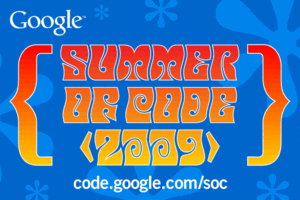“Building Teams, Polishing Ideas, Creating Truly Compelling Demos”
iPhoneDevCamp 3
Dom Sagolla has been a key mover of the iPhoneDevCamp movement since day one. It’s been impressive to have Dom’s energy, enthusiasm and ideas take the iPhoneDevCamp to next level. Throughout the DevCamp, Dom was hard at work, helping folks as well as making progress on his upcoming book. Here are Dom’s responses to some questions I had for him at the camp this year.
-
The iPhoneDevCamp model offers a winning formula for community collaboration events. It is likely that other technology communities may be able to use this model. What would be your advice to them?
It’s already begun with things like AndroidDevCamp, PreDevCamp, and now “WinMoDevCamp“.
My advice is always this: Make the event all about the participants. When you focus on building teams, polishing ideas, and creating truly compelling demonstrations, you are following the model of BarCamp.
-
A 10 year old developer won applause as the youngest participant at the DevCamp this year. How do you see the camp inspiring kids in school and in general?
10-year-old Annika has my favorite story this year. Having been dragged along to last year’s event, she made the best of it by reviewing the apps of other participants. This year, she’s created @KidGameReviews and started developing her own games! Annika shows us just how easy it is to get started with iPhone Development. She’s still learning but the growth I’ve witnessed over the past year, in her and in the community, is inspiring.
iPhone is a lens, through which the problems of computer science may be examined. I hope kids of all ages get a chance to play with Apple’s superb example code just to see what’s possible in a few days’ time.
Every year we sponsor a few student participants at iPhoneDevCamp, and we will certainly continue that tradition. Perhaps we’ll add to this a new category of “Youngest iPhone Developer”.
-
Some apps such as Avatar Wall, winner in Coolest iPhone App category, used Twitter to demonstrate their ideas. What do you think is the impact of social networking services such as Twitter on the type of apps being developed?
Twitter is becoming a communication utility, like other service providers online and in our homes. Seeing the Twitter API in use at iPhoneDevCamp is another sign that social networking is now a fixture in our lives.
iPhone was launched just when Twitter began to gain prominence two years ago. There has been a complimentary arc of growth for both Apple and Twitter since then, and Twitter was profiled as an “Apple Business“.
I see the intersection of iPhone and Twitter as a kind of cultural nexus. The best of breed Twitter apps are on the iPhone / Mac platform, and the most virulent iPhone apps integrate well with Twitter and other social media. The two platforms combined create a vortex of attention and zeal that is driving innovation on both ends.
-
How does a community event like the iPhoneDevCamp that has grown in popularity every year fit into the iPhone developers ecosystem? How does it complement official (e.g. by Apple) and unofficial (e.g. barcamps) activities?
I like to think of iPhoneDevCamp as a “sister event” to WWDC. Folks go to learn new technologies and talk with Apple engineers at WWDC. Inevitably they are inspired and want to test their knowledge, so we have created iPhoneDevCamp where they can form teams and build things.
The relationship is complimentary: We do our best to schedule around Apple’s events, and stay in contact with them at an informal level.
In the BarCamp tradition, we want to be a model for other Open Source communities to band together, find sponsorship, and field events of their own. I think the Satellites program launched for last year’s iPhoneDevCamp, with double the participation this year, pretty clearly shows our commitment to the BarCamp way.
-
Your writing project “140 Characters: A Style Guide for the Short Form” sounds exciting. Is there going to be a chapter about using Twitter at the iPhoneDevCamp? You mentioned you’d be gathering some source material for the book at the DevCamp. Did you notice anything interesting about how Twitter was being used by the participants (and organizers)? Tell us more.

140 Characters: A Style Guide for the Short Form (flickr:Sagolla)
I do talk about iPhoneDevCamp in “140 Characters”, yes! Our use of #ipdc3 as a tag this year, as well as a few choice quotes from our performer @BT are profiled: http://bit.ly/140-chars.
iPhoneDevCamp itself formed out of the Twitter community. @Ravenme wrote to @ChrisMessina who posted an inquiry for space, which I picked up because I’d just started following Chris in mid-2007. I replied in public to Chris, he followed me back and the rest is a history of 100% year-on-year growth.
Twitter accelerates small societies.
We did an experiment this year, where we made our Satellite broadcast available via iPhone and iPod touch for the first time. Tweeting that link resulted in about 1000 viewers around the world. That’s how I measure reach: How many people are tuned into your message RIGHT NOW?
I measure impact with action: in the last days of Registration for the camp, we sold out three (3) times. Each time capacity was lifted, we tweeted the Registration link and we were sold out again within hours.
The Twitter community is voracious for learning and real-life connection. Tapping into that has been critical to the success of iPhoneDevCamp and the iPhone Developer community abroad.
-
What can we expect at DevCamp 4? Any surprises coming up?
Next year: iPhone Jam Band!

Seriously we haven’t talked about plans for next Summer yet. Right now is the time to follow up with all the Satellite communities and see how we can enable more events elsewhere during the year.
We would be thrilled to work with Yahoo! and all of our sponsors again next year, which we know will be yet again bigger.

Dom Sagolla (flickr:Sagolla)
Dom Sagolla helped create Twitter with Jack Dorsey in 2006 then co-founded iPhoneDevCamp with Raven Zachary in 2007 (just a week after the launch of the original iPhone). After helping Raven and the team create the Obama ’08 iPhone App in 2008, Dom started his own company DollarApp in San Francisco, resulting in two Staff Favorites: Big Words and Math Cards. @Dom’s book “140 Characters: A Style Guide for the Short Form” is the subject of his next iPhone invention, shipping this Fall.






